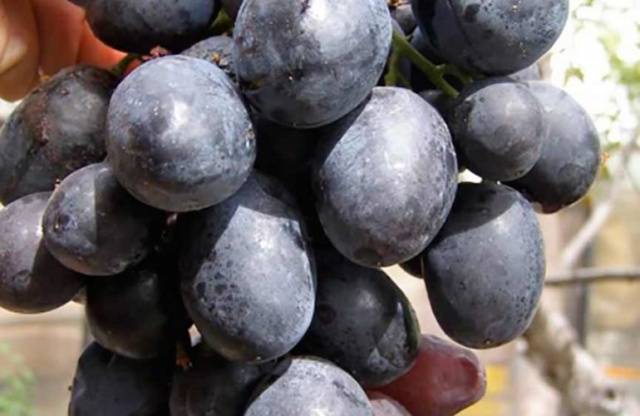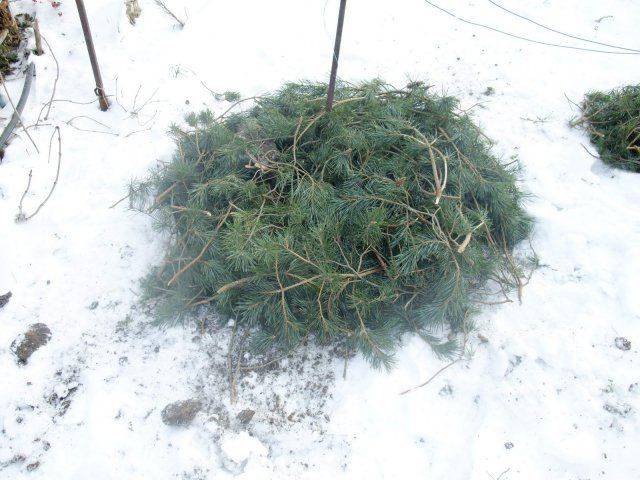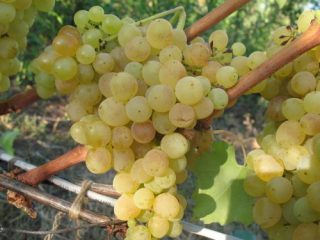Content
The homeland of the Ruslan hybrid grape is Ukraine. Breeder Zagorulko V.V. crossed two well-known varieties: Kuban And Gift to Zaporozhye. The resulting large-fruited table hybrid has not yet been studied much, but has already spread throughout the territory of Belarus, Russia and Kazakhstan. Ruslan grapes were highly appreciated at the exhibition in Crimea.
Hybrid characteristics
Looking at the photo, description of the Ruslan grape variety, and reviews from gardeners help us get to know the culture better. When crossing varieties with dark and light fruits, a hybrid was obtained that bears large clusters. Large berries are characterized by loose placement, as well as thin skin, which is practically not felt when eaten.
For fruit sellers, the Ruslan grape variety is of particular interest. The berries stay firmly on the bunch without falling off during transportation. The harvested crop is stored for a long time without losing its presentation.
The grapes are early ripening hybrids. The technical maturity of the berries occurs in early August. Approximately 105 days pass from the appearance of buds to harvesting. In cold summers, the ripening period can take up to 120 days.
Getting acquainted with the description of Ruslan grapes, let's take a closer look at the description of the berries:
- fully ripened fruits acquire a deep blue color with a black tint;
- the skin on top is covered with a white coating that can be easily washed off by hand;
- the shape of the fruit is elongated in the form of a regular oval;
- there are no small berries in the cluster;
- the sweet pulp contains notes of plum aroma;
- the thin peel reliably protects the pulp from cracking, but is practically not felt when chewing;
- the weight of one berry varies between 10–20 g;
- inside the dense and juicy pulp there are two seeds;
- sugar content – 18 g/100 cm3, acids – 6.5 g/l.
Ruslan table grapes produce clusters weighing 0.5–0.9 kg. The berries are medium, sometimes tightly adjacent to each other. If fewer bunches are left on the vine, their weight will increase to 1.2 kg. Ruslan grapes are grown on an industrial scale by amateur gardeners.
Positive and negative qualities of the variety
Concluding the description of the Ruslan grape variety, it is worth dwelling on the positive qualities:
- bisexual flowers are well pollinated even with minimal participation of insects;
- the variety is considered high-yielding, and the ripening rate is 75%;
- mature clusters are able to hang on the vine for a long time without losing their taste and presentation;
- the pulp is saturated with a vitamin complex, which makes it possible to use Ruslan grapes for the manufacture of medicines;
- the hybrid is resistant to pests and fungi, and ripe berries do not attract insects;
- after planting, cuttings take root well and grow quickly;
- Ruslan does not tolerate an abundance of moisture, but even in such conditions, rot does not appear on the berries.
Ruslan grapes tolerate frost well. The vine remains alive at temperatures down to –25OC. The thin skin of the berries is so strong that it is not afraid of light mechanical stress.
The disadvantage of the Ruslan grape variety is its poor moisture tolerance. The berries on the bunches do not rot, but the skin cracks, and the flow of sweet juice begins to attract small flies.
Landing Features
By looking through reviews, photos, and detailed descriptions of the Ruslan grape variety, you can decide whether you need to start a crop in your garden. It is easier to make a final decision after becoming familiar with the features of growing a hybrid.
The soil is prepared for planting Ruslan grape seedlings. The soil is mixed with humus and peat. Drainage is installed in the holes, and a peg is driven in the center. After planting, the seedling is tied to a support until it takes root. When planting Ruslan in rows, a distance of at least 1.5 m is maintained between the holes. If the site allows, the seedlings are planted in large steps. The vine of mature bushes grows greatly and requires free space.
The optimal row spacing is 3 m. Free spans simplify harvesting, caring for the vine, and also provide good ventilation. When planted sparsely, grapes are less susceptible to diseases and the bunches ripen faster.
Ventilating the rows accelerates the evaporation of moisture. Ruslan does not tolerate constant dampness. Too much water fills the berries with excess juice. The skin cannot withstand wateriness, and the fruits begin to crack.
The further development of the vine, the setting and ripening of berries depends on the correct choice of place for planting seedlings. For Ruslan, choose the sunniest site, located on the south or southwest side. In autumn, the vine is covered in cold regions. The hybrid can withstand frosts down to -23OS, but no one is safe from the gifts of nature.
Reproduction methods
Experienced gardeners use three methods of propagating Ruslan grapes:
- Planting seedlings with roots. The most common method of propagation is based on the germination of cuttings taken from mature vines. In early spring, with the onset of warmth, Ruslan seedlings are planted with unopened buds. In mid-May, awakened planting material with leaves is used. Ruslan seedlings can be planted in the fall. This is usually done in October so that rooting occurs before the onset of frost. Immediately after planting, the Ruslan grape seedling is protected from the cold overnight.
- Grafting cuttings onto an old vine. The propagation method is complex and is suitable for experienced gardeners. If there is a vine growing in the yard, but you don’t like the variety, you can grow Ruslan on its roots by grafting. Cuttings are suitable with awakened and dormant buds. The Ruslan variety is grafted in spring and autumn, when the days are warm.
- The simplest method of propagation is to dig in a long lash of mature Ruslan vine in the summer. The soil in this place is constantly kept moist so that the shoot takes root. The next season, or better yet, after two years, the vine is cut off from the main grape bush. Ruslan's seedling continues to grow on its own roots.
For an experienced gardener, propagating Ruslan grapes is a simple matter. Use any of three methods.It is better for beginning winegrowers to buy a ready-made seedling or use the method of burying the vine in the ground.
Tips for proper landing
Fertile soil is only half the requirement for successful grape growing. Ruslan needs good drainage, ensuring the free flow of excess moisture from the root system.
Preparing a hole for planting consists of the following steps:
- For a grape seedling, dig a hole 80 cm wide, deep and long.
- Drainage is placed first at the bottom of the hole. Crushed stone, small stone or gravel will do. The drainage is covered with three buckets of humus mixed with fertile soil and peat.
- The pit is left to settle for at least 14 days until the day the grape seedlings are planted. During this time, the soil will shrink.
- A Ruslan seedling is selected with a strong root system and two eyes.
- After shrinking, more soil is added to the hole, laying it out in a heap. You can add 1 tbsp. l. mineral fertilizer.
- The seedling is lowered into the hole, bending the roots to the side, and covered with earth up to the neck.
After planting the grapes, 3 buckets of water are poured into the hole. After absorption, the soil will still sag. If a peg is driven into the center of the hole, the grape seedling is tied for stability. The soil in the hole is covered with mulch. Sawdust or peat will do.
Rules of care
Ruslan does not require special care. The variety is unpretentious, but it cannot be completely left to spontaneous growth. Grapes quickly form stepsons. They need to be trimmed in a timely manner, plus watering, fertilizing and other procedures.
Watering
Ruslan does not need frequent watering.The only exception can be a dry summer. Mandatory watering of grapes is carried out before flowering and during the ripening of the bunches. After water is absorbed, the soil around the trunk is loosened and then covered with mulch on top.
Top dressing
Many winegrowers are accustomed to using organic matter as fertilizer. To apply fertilizer around the grape trunk, dig a ditch as deep as a spade, pour 1.5 buckets of humus onto an adult bush and cover it with soil on top. Mineral fertilizers show good results. Complex mixtures can be used.
Vine pruning
The intensively growing Ruslan grape vine is pruned. Otherwise, overloading the bush will affect low yields. Adult grapes have a maximum of 35 shoots with six eyes. In autumn, dried vines are cut off. Remains of foliage and unpicked berries are removed from the bush.
Preparing for winter
For the winter, Ruslan grapes are covered in regions where the temperature drops below -20OC. The ground around the trunk is covered with a 10 cm layer of sawdust or straw. The vine is covered with shields, spruce branches, film, or simply covered with earth.
Disease Prevention
Ruslan is resistant to the main grape diseases - mildew and oidium. However, in the spring at the beginning of the growing season, preventative spraying with anti-fungal preparations will not hurt. When spots appear on the leaves, serious treatment is started, but in a neglected state the result will be poor.
Reviews
Photos, reviews, videos help you learn more about the description of the Ruslan grape variety, which we suggest you familiarize yourself with.
In the video, Ruslan grapes are one year old:




















